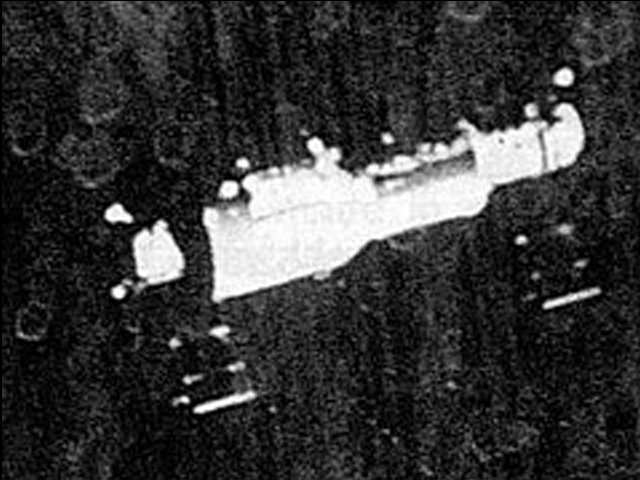Soviet Space Stations: Salyut 1

Photo of Salyut 1 taken by Soyuz 11 (source)
After losing the race to the Moon, the Soviets decided to win a different race: launching the first space station into orbit. They succeeded in 1971 when they launched Salyut 1, the first in a long line of space stations as part of the Salyut program.
The Salyut program
The Salyut program was a combination of two separate programs: the civilian Salyut program (DOS or Durable Orbital Station) and the military Almaz program (OPS or Orbital Piloted Station), although both were publicly named Salyut in order to hide the military aspect from the West. While planned to use different designs for military and civilian launches, they ironically cannibalized parts from one another frequently and mixed roles. In fact, the Almaz stations were designed by Vladimir Chelomei, who also designed the TKS spacecraft (whose service module still forms the core of the ISS today) and the Proton rocket (still in use today as a heavy-lift rocket). On the other hand, the Salyut stations were mostly designed by Sergei Korolev, designer of the Soyuz rocket and spacecraft (both still used to this day, notably as the only ride to the ISS at the moment), as well as the failed N1 rocket (the Soviet counterpart to the Saturn V). While normally opposing one another, they were forced to work together on the Salyut program.
Salyut 1 Design

Soyuz docking with Salyut 1 (source)
Almaz station hulls were ready earlier but were taking longer to outfit with their sophisticated military equipment, so political necessity gave them over to Korolev who modified them by adding Soyuz parts to complete them as a civilian station. As in the picture above, the middle two sections are the primary compartments where the crew worked and their comms and life support equipment were housed. Korolev then added a transfer compartment to the nose, with a Soyuz docking port and solar panels, and to the tail he added a Soyuz service module for propulsion. This Franken-station was launched unmanned on a Proton-K rocket in early 1971, with the crews following later.
Salyut 1 Scientific Equipment
Salyut 1 contained the Orion Space Observatory, which combined a Mersenne mirror telescope and UV-sensitive Wadsworth spectrograph, and was the first human-operated telescope used outside of Earth's atmosphere. Aside from the testing the station's design and monitoring the effects of long-duration spaceflight on the crew, it focused on studying geologic features on the Earth's surface and ice caps, atmospheric formations, and electromagnetic phenomena on Earth and in space (source).

Salyut 1 cutaway (source)
The Mission
Salyut 1 was launched unmanned, with Soyuz 10 planning to dock with it and transfer the crew. Soyuz 10 launched a few days after Salyut 1, but failed to completely dock after having multiple problems with their autopilot. Soyuz 11 went up about a month later and successfully docked, where they set records by spending 23 days in orbit and performing several experiments. They had planned to stay a full month, but had multiple problems with the station, including an electrical fire. Tragically, the crew of Soyuz 11 died due to an air leak on reentry, similar to the non-fatal problems also experienced by Soyuz 10 on reentry. Two serious problems in a row grounded the Soyuz fleet until an updated version could be built, and during this time Salyut 1's orbit slipped low enough that it was remotely deorbited.

Commerative stamp of Salyut 1 and Soyuz 11 crew, showing the craft docked in orbit (source)
Salyut 1 paved the way for a series of space stations which have taught us many things about human life in space. Although it had many problems, and it's first crewed mission ended in tragedy, the lessons learned were put to good use and were not in vain.
DOS-2 Postscript
Salyut 1 was also labelled DOS-1, as the first civilian space station. However, Salyut 2 was not the second space station launched; DOS-2 would have had a nearly identical design, except visiting Soyuz spacecraft would only have two crew, in an effort to stop a similar accident as Soyuz 11 happening again. However, DOS-2 was lost on launch in 1972, and the Salyut 2 designation went to OPS-1, the first military Almaz station under the Salyut program.
Salyut 1 front aspect, and Salyut 1 rear aspect with Soyuz 11 docked to front port



Comments
Post a Comment